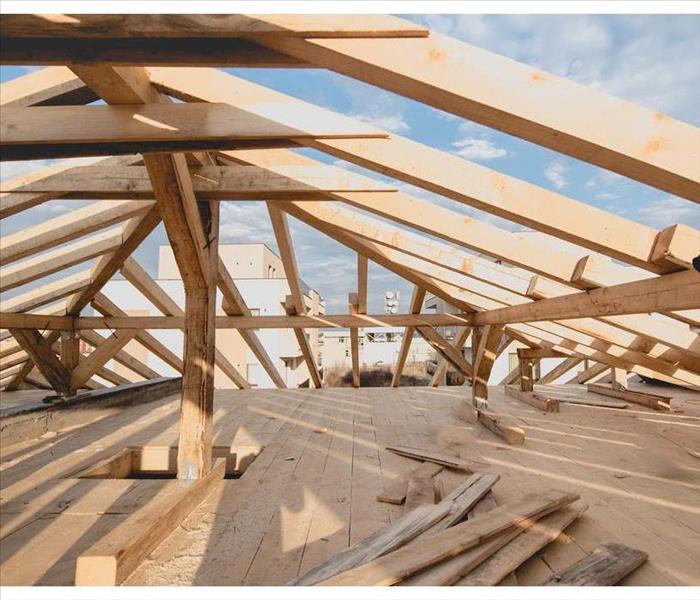Protect Your Building Envelope
10/4/2021 (Permalink)
Whether you work in an area of the country that gets a lot of rainfall or just a little bit, there are four ways that your building could experience rain damage:
• Bulk Water: Rain, runoff, and other sources of water-driven mostly by gravity
• Capillary Water: Water that moves through channels in the building, usually pulled along through tube-like means
• Airborne Moisture: This includes the humidity in the air whether it occurs naturally or is created by air conditioning
• Movement of Water Vapor: This refers to water from high-humidity sources, such as hot water baths or greenhouses, that move throughout a building to affect low-humidity levels
What Is the Building Envelope?
Without the right waterproofing steps, black mold could develop within the building envelope. As a business owner, you can work closely with water remediation experts to make sure your water is thoroughly waterproofed.
Take a close look at three elements of the building: the roof, gutters, and siding. These are some of the most common areas for water to infiltrate the "envelope." Regular maintenance and ongoing inspections from Shoreline, WA experts can keep these high-risk areas safe and water-tight.
The Roof
This one area of your building is the strongest protector against rain damage. Whether the weather brings rain or snow, that water will probably drop onto your business from overhead, so keep a close eye on the shingles, the underlayment, and any moisture barriers that make up the roof. Pay close attention to how the sun, wind, and falling debris affect roofing materials.
Gutters
This element of your waterproofing system keeps water away from the windows and foundation of your building. Make sure the gutters are in good shape and free of debris.
Siding
Although most rain and snow come from above, the wind can blow some of this moisture against the walls of your building. Whether you have brick, stucco, or vinyl siding, make sure these materials provide a strong barrier against water with proper maintenance.
Rain damage doesn't have to penetrate your building. Locate the most likely trouble areas and work with professionals to prevent damages.






 24/7 Emergency Service
24/7 Emergency Service
